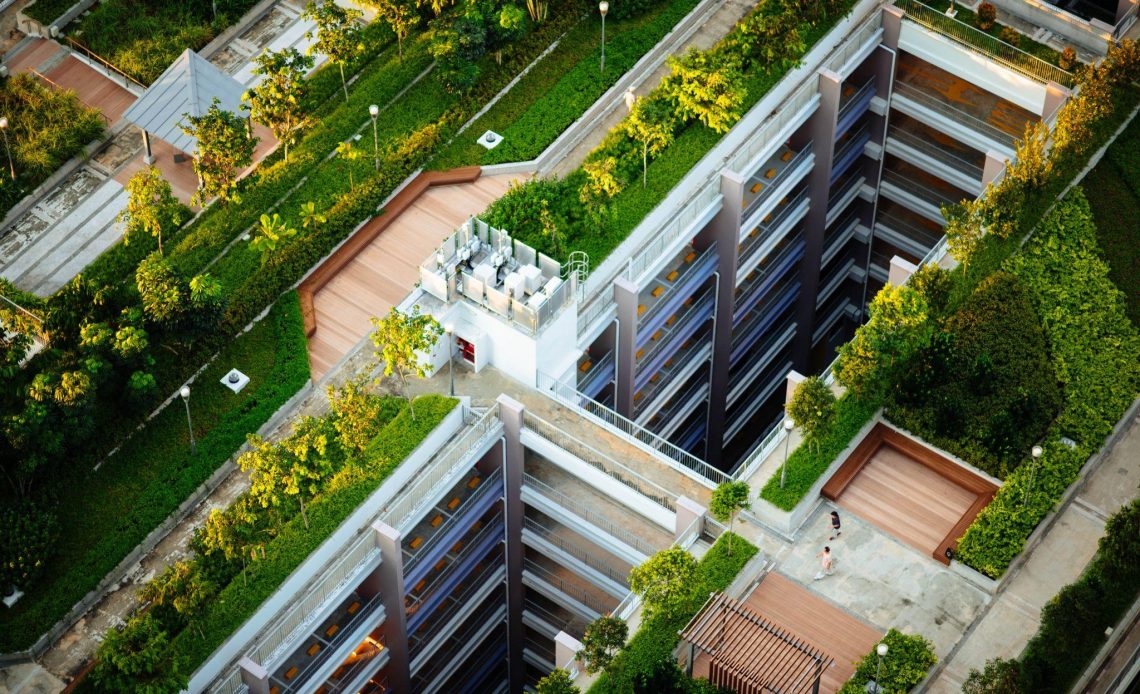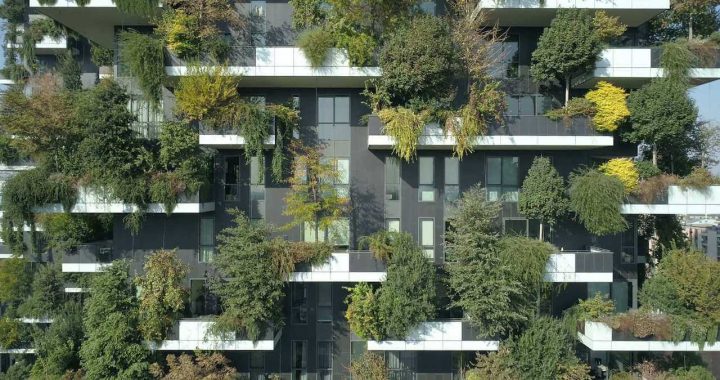
Biophilic design is emerging as a powerful antidote, blending modern architecture with the restorative qualities of the natural world. At its core, this design philosophy aims to bring the tranquillity and vitality of nature into our built environments, bridging the gap between urban living and the natural landscapes our minds crave. In cities where concrete jungles have replaced real ones, biophilic design offers a glimpse of serenity, helping to counterbalance the fast-paced, often harsh realities of urban life.
As urban populations skyrocket, the demand for housing and infrastructure has led to a dramatic reduction in green spaces. Steel, glass, and asphalt dominate our skylines, pushing nature to the peripheries. Yet, the human need for connection to the natural world persists. Scientific studies consistently reveal the positive effects of nature on mental health, productivity, and overall well-being. Biophilic design is not just a trend—it’s a necessary evolution in how we think about the spaces we inhabit.
What exactly is Biophilic Design?
Biophilic design is a concept rooted in humanity’s inherent desire to connect with nature. Coined in 1984 by biologist E.O. Wilson, the term “biophilia” refers to our deep-seated affinity for the natural world. Wilson posited that integrating elements of nature into our daily lives isn’t just aesthetically pleasing but essential for our mental and physical health. From ancient marvels like the Hanging Gardens of Babylon to modern urban structures, the idea of blending natural elements with architecture has always been appealing.
Why is Biophilic Design gaining popularity?
As the climate crisis intensifies, biophilic design presents a solution that is both environmentally friendly and aesthetically inspiring. Green architecture promotes sustainability by reducing carbon footprints, enhancing biodiversity, and regulating indoor environments. This concept is exemplified by visionary projects such as Stefano Boeri’s “Vertical Forest” in Milan, which integrates thousands of trees and plants into a towering urban landscape, absorbing CO2 and mitigating air pollution.
Boeri’s architecture firm is now pushing the envelope even further with its groundbreaking Liuzhou Forest City project in China. Designed to combat the severe smog in one of the country’s most polluted cities, this innovative urban design will incorporate over 40,000 trees and one million plants, capable of absorbing 10,000 tons of CO2 annually. These revolutionary efforts demonstrate how biophilic design can significantly improve air quality, create habitats for wildlife, and provide healthier living conditions for urban dwellers.

The COVID-19 pandemic also accelerated the trend of biophilic design, particularly in residential spaces. As lockdowns forced people to spend more time indoors, the desire to create calming, nature-inspired environments in homes surged. Renowned interior designer Clodagh has spoken extensively about the shift in public awareness toward biophilic spaces. “People have woken up to the fact that being surrounded by nature can profoundly affect mental and physical health,” she remarked in a recent interview with Architectural Digest.
Key Elements of Biophilic Design
Biophilic design doesn’t just mean adding a few potted plants to your office or home. It incorporates a variety of design elements that create deeper, more meaningful connections to nature. These include:
Access to Nature: Whether through large windows, rooftop gardens, or indoor courtyards, providing visual and physical access to nature is central to biophilic design. These spaces not only bring in natural beauty but also offer mental relief from the visual clutter of urban environments. Natural materials like wood, stone, and water features further enhance this connection.
Natural Lighting: Maximizing natural light is another cornerstone of biophilic design. Skylights, floor-to-ceiling windows, and light wells flood interiors with sunlight, which helps regulate circadian rhythms, improving sleep patterns and overall well-being. Natural light also profoundly affects mood, boosting energy and reducing fatigue.
Use of Natural Materials: Incorporating materials like wood, bamboo, and stone adds warmth and texture to interior spaces, creating a tactile connection to the outdoors. These materials are pleasing to the senses and serve as a subtle reminder of nature’s resilience and beauty.
Greenery: One of the most impactful elements of biophilic design is the integration of plants and trees into both indoor and outdoor spaces. From lush indoor gardens to living walls, greenery contributes to better air quality, lowers stress, and improves concentration and creativity.
Water Features: With its soothing sound and reflective properties, water adds calm and serenity to biophilic spaces. Fountains, ponds, or even small indoor water features help mimic the natural world, creating peaceful environments that support relaxation and stress relief.
The Many Benefits of Biophilic Design
Reduced Stress: A connection to nature has been shown to lower stress levels, reduce blood pressure, and improve overall mood. The calming effects of natural light, greenery, and water create spaces where individuals feel more at ease, which is especially beneficial in high-stress work environments.
Improved Cognitive Function: The presence of natural elements has been linked to better cognitive performance. Employees working in biophilic environments often report higher levels of creativity, productivity, and job satisfaction. Similarly, students exposed to natural light and outdoor views tend to perform better academically.
Enhanced Air Quality: The plants and trees used in biophilic designs also act as natural air purifiers, removing toxins from the air and improving ventilation. This leads to healthier indoor environments, reducing the incidence of respiratory illnesses and boosting overall well-being.
Integrating Biophilic Design Into Everyday Spaces

Biophilic design principles can be applied in various ways, regardless of the scale of a project. Here are some practical strategies to bring biophilic design into any space:
- Maximise natural light with large windows, skylights, and open layouts.
- Incorporate natural materials like wood, stone, and bamboo to add texture and warmth.
- Add water features like fountains or reflecting pools to create a calming atmosphere.
- Use colour palettes inspired by nature, such as earth tones, greens, and blues.
- Introduce greenery with potted plants, vertical gardens, or green roofs.
By integrating these elements, architects, designers, and homeowners alike can create spaces that foster a deeper connection to nature while promoting health, well-being, and sustainability. As we continue to adapt to the challenges of urbanisation and climate change, the biophilic design offers a path forward, one that honours our natural heritage while paving the way for a healthier, more harmonious future.

